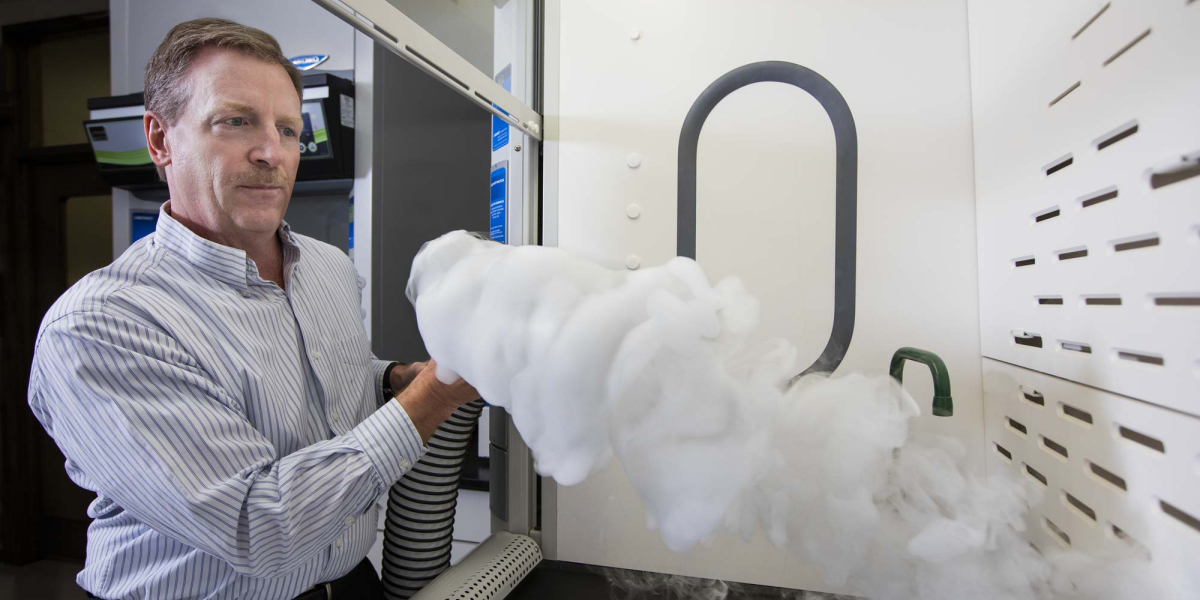What is "Explosion Proof" and When is it Needed?

Explosion Proof (EP) is a crucial requirement for equipment intended for use in hazardous (classified) locations, as stipulated by the National Electrical Code, NFPA 70, Article 500. These locations are known to have potentially ignitable, flammable, or combustible atmospheres, where a mere spark could trigger an explosive reaction. To ensure safety, all electrical components installed in hazardous (classified) locations must be insulated from the atmosphere.
In electrically classified laboratories, electrical outlets and switches are enclosed in boxes that are intrinsically safe and rated as EP. Additionally, wiring in the lab is completely enclosed in conduit to prevent any sparks or potential ignition sources. Spark resistant construction is an absolute necessity for any equipment installed in these spaces. Components within a hazardous (classified) location must comply with EP requirements as defined by NFPA 70 to mitigate the risk of explosions and ensure the safety of personnel.
What is considered a hazardous (classified) location?
The National Electrical Code (NEC) and National Fire Protection Association (NFPA) 70 classify rooms with potentially explosive or flammable atmospheres as either Class I, II, or III and Division 1 or 2 within each of these classes. Class I locations refer to places where flammable gases or vapors may be present in the air in quantities sufficient to produce explosive or ignitable mixtures. Class II and III locations are rooms with the presence of combustible dust and fibers, respectively, and are not typical of the atmosphere in a laboratory environment.
If a fume hood is situated in an area with any of these electrical classifications, it should be rated as EP, irrespective of the nature of the activities performed inside it. This is because laboratories with a potentially flammable atmosphere must be devoid of any spark potential, including the electrical components situated outside the fume hood’s airstream.
What makes a fume hood classified as Explosion Proof?
It is a common misconception that working with a flammable chemical automatically requires an EP fume hood. However, only a small percentage of customers actually need EP fume hoods for their application. Many laboratories can effectively manage flammable chemicals with standard fume hoods that are properly ventilated and meet relevant safety standards.
When determining the need for an EP fume hood in your application, there are a few key factors to consider. Contrary to common misconception, EP hoods are not designed to contain explosions, but rather to minimize the potential for sparks that could ignite a flammable atmosphere.
In fact, most manufacturers define an EP hood as one that has been modified to eliminate spark potential outside the fume hood, reducing the risk of igniting a flammable atmosphere. These hoods are specifically designed to prevent sparks and potential ignition sources from escaping the hood and posing a risk in hazardous (classified) locations.
An EP laboratory hood is equipped with specially designed electrical components, such as EP rated switches, receptacles and internal wiring. The fume hood manufacturer does not supply these EP components, but instead, a licensed electrician installs them on-site in accordance with all state and local codes. For this reason, all EP modified Labconco fume hoods come with an EP rated incandescent light fixture and without bulbs, wiring, switches or duplexes.
Exhaust blowers serving hazardous (classified) locations
Spectrum™ Fiberglass Reinforced Polyester (FRP) and PVC exhaust blowers are designed to meet the requirements for applications in hazardous (classified) locations, when installed in accordance with ANSI/ASSP Z9.5 and NFPA 45 guidelines. As per NFPA 45, which is the standard for fire protection in laboratories using hazardous materials, exhaust fans used to remove hazardous substances must be located on the roof or exterior of a building. Adhering to these installation guidelines helps ensure the safe operation of exhaust fans and prevent any potential ignition sources from being present inside the hazardous (classified) location itself.
As stated in the American Society of Safety Professionals’ ANSI/ASSP Z9.5 standard, exhaust fans must conform to AMCA 99 for their construction. According to AMCA 99, exhaust fans that handle potentially explosive particles, fumes or vapors are required to have spark resistant construction for all components within the hazardous air stream, eliminating the risk of ignition.
Labconco’s Spectrum FRP and PVC exhaust blowers are designed with the highest level of spark resistant construction, adhering to Type A construction requirements as specified in AMCA 99. This ensures that these exhaust fans meet the safety standards for operation in hazardous (classified) locations, providing an added layer of protection against potential sparks and ignition sources.
| chevron_left | 4 Steps to selecting a fume hood blower | Articles | Understanding Glove boxes: A Comprehensive Overview | chevron_right |






